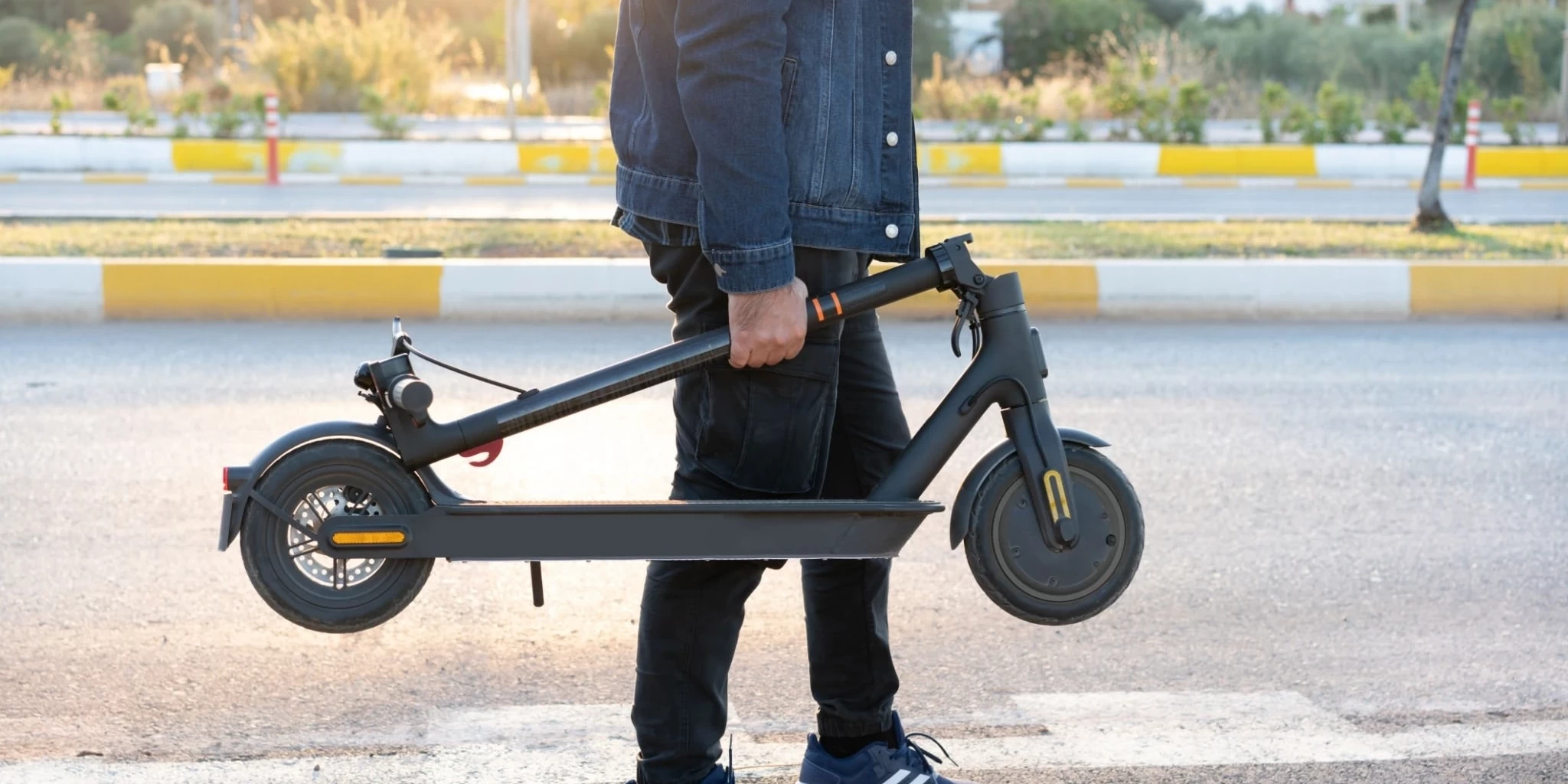Jump to:
Electric scooters (e-scooters) have taken the world by storm. In recent years, these eco-friendly, motorized vehicles have become a popular alternative to traditional modes of transportation in cities across the globe. E-scooters offer a convenient, affordable, and sustainable solution to urban mobility challenges, particularly for short distances. As more people embrace e-scooters as their primary means of transportation, it raises the question: will e-scooters become the primary mode of transportation in cities?
In this blog post, we will examine the factors behind the rise of e-scooters, the challenges and opportunities of their integration, the economic and environmental implications of their proliferation, and the future innovations in e-scooter technology. We will also assess the regulatory concerns surrounding e-scooters and offer our predictions for the future of e-scooters.

The Popularity Of E-Scooters In Urban Areas
E-scooters have become increasingly popular in urban areas around the world. According to a report by Frost and Sullivan, the global e-scooter market is projected to reach £50 billion by 2030, with an estimated 40 million e-scooters operating on the roads. This growth is due to several factors, including the convenience, affordability, and ease of use of e-scooters.
E-scooters are an attractive option for urban commuters who need to travel short distances quickly and cheaply. They are easily accessible, and users can rent e-scooters on-demand through mobile apps. E-scooters are also eco-friendly, emitting less pollution than traditional vehicles. This advantage aligns with the growing demand for sustainable transportation options and the need to reduce city carbon emissions.
Moreover, the popularity of e-scooters is due to their compatibility with the sharing economy, which has disrupted traditional business models across sectors. The sharing economy brings significant benefits to e-scooter companies and users alike. E-scooter companies do not need to bear the costs of owning and maintaining the vehicles, while users avoid the hassle of owning a scooter. Instead, users can rent an e-scooter for a small fee and leave it at a designated drop-off point, freeing up space on busy streets and sidewalks.
Factors Driving E-Scooter Adoption
The widespread adoption of e-scooters is due to several significant factors. Firstly, urbanization has increased traffic congestion and air pollution in cities; influential policymakers are looking for alternative solutions to reduce traffic and improve air quality. E-scooters offer a practical and sustainable solution to these challenges by providing an affordable, low-emission mode of transportation.
Secondly, the affordability of e-scooters is driving their adoption in cities. E-scooters cost much less than cars, a significant financial burden for most city residents. As urbanization increases, more people seek cost-effective ways to move around, and e-scooters provide an affordable and practical option.
Thirdly, e-scooters have a minimal carbon footprint, making them an ideal solution for cities grappling with air pollution and climate change. According to a European environment agency (EEA) study, road transport accounts for over 70% of city carbon emissions. E-scooters emit less carbon than traditional modes of transportation and can play a crucial role in reducing city carbon emissions.

Challenges Facing E-Scooter Integration
Despite their many benefits, several challenges hinder the integration of e-scooters into urban transportation systems. Safety is one of the most significant challenges. E-scooters are lightweight and move at high speeds, making them susceptible to accidents. Additionally, there have been reports of users riding e-scooters on sidewalks, posing a threat to pedestrians.
Another challenge facing e-scooter integration is the lack of infrastructure to support their use. Most roads and sidewalks in cities are designed for cars and pedestrians, making integrating e-scooters into the mix challenging. E-scooters need designated lanes and parking spots to ensure their safe use and storage.
Thirdly, e-scooters are often the subject of vandalism and theft, destroying public property and causing revenue loss for e-scooter companies. This threat is particularly significant as e-scooter companies expand their operations to new markets and cities.
Environmental Advantages Of E-Scooters
The proliferation of e-scooters offers significant environmental advantages. E-scooters emit less carbon than traditional modes of transportation, reducing pollution in cities. This benefit is essential as cities grapple with the effects of climate change and the need to reduce carbon emissions.
Moreover, e-scooters are quiet, ensuring less noise pollution in cities. Urban residents can enjoy more tranquil and peaceful city environments as e-scooters become the primary means of transportation.
Economic Implications Of E-Scooter Growth
The growth of the e-scooter market has significant economic implications. Firstly, e-scooters are disrupting traditional modes of transportation in cities, leading to a decline in revenue for taxi and ride-sharing companies.
Secondly, e-scooters are creating new business opportunities for entrepreneurs and investors. The sharing economy has created a new market for e-scooter-sharing companies such as Lime and Bird, resulting in significant investments in the sector.
Thirdly, as e-scooter ridership continues to grow in cities, the demand for maintenance and repair services will increase, leading to job creation and economic growth.
Regulatory Concerns Surrounding E-Scooters

As e-scooters increase, are grappling with regulating their use. One of the most significant regulatory concerns is the safety of e-scooter riders and pedestrians. Policymakers must ensure that e-scooter riders obey traffic laws and regulations and that e-scooter companies provide sufficient training and safety guidelines for riders.
Another regulatory concern is the integration of e-scooters into existing transportation systems. Policymakers need to ensure that there is sufficient infrastructure to support the use of e-scooters, including designated lanes and parking spots.
Future Innovations In E-Scooter Technology
The future of e-scooters is bright, with many innovations expected in the coming years. One of the most exciting trends in e-scooter technology is the development of longer-lasting batteries. Longer-lasting batteries will allow e-scooters to travel further, making them more practical for longer journeys.
Another innovation expected in e-scooter technology is the integrating of artificial intelligence (ai), which will increase the safety and efficiency of e-scooter use. Ai will be used to develop autonomous e-scooters, reducing the risk of accidents and improving user convenience.
Furthermore, companies have started exploring the use of solar-powered e-scooters. Solar-powered e-scooters would not need to be plugged in and would reduce the emissions produced by charging e-scooter batteries.
And Predictions On The Future Of E-Scooters
The rise of e-scooters in urban areas has created significant opportunities and challenges for policymakers and businesses. The convenience, affordability, and sustainability of e-scooters have made them a popular alternative to traditional modes of transportation. Still, their integration into existing transportation systems poses several challenges, including safety and infrastructure. The proliferation of e-scooters also poses regulatory challenges for policymakers.
However, the future of e-scooters is bright, with many innovations expected in the coming years. E-scooters will become more practical and efficient, and ai and solar power will play critical roles in their development. It is, therefore, safe to predict that e-scooters will continue to grow, and they may become one of the primary modes of transportation in cities. Additionally, please correct any grammar mistakes you find in the article.
Peaker
Meet Peaker, our suave electric scooter enthusiast from the charming streets of London. With a passion for sustainable urban mobility, Peaker navigates the world of electric scooters with a keen eye for style and efficiency. Whether he's zipping through the city or sharing his latest scooting adventures, Peaker is your go-to guide for all things electric and eco-friendly. Join him on the ride towards a greener, swifter future!





